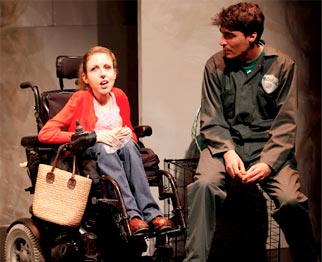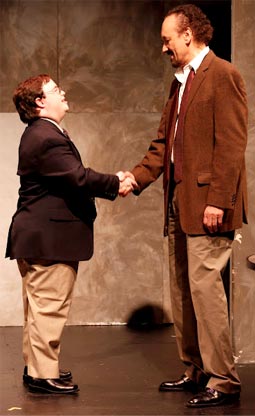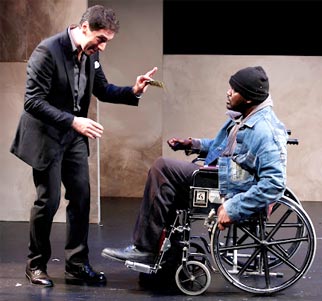by Joan Leotta

Governor Jack Markell, Delaware. Photo by Kevin Flemming.
Delaware is known for being the first state in the union and for being the second smallest. But this little state is now making a big impact for employment of people with disabilities. Putting Delawareans back to work has been one of the state’s top five initiatives since Governor Jack Markell (D) took office in 2009. And, since his appointment as 2012–13 Chair of the National Governors Association, Markell has focused specifically on increasing job opportunities for individuals with disabilities.
Maintains Markell, “State executives have the responsibility to ensure that all citizens have the opportunity for productive employment.” His A Better Bottom Line: Employing People with Disabilities initiative focuses the work of all state chief executives on developing best practices, with the goal of increasing the employment ranks of people with disabilities across the country.
Markell says, “Today, Americans with disabilities are facing disproportionately high rates of unemployment compared to those without. This impacts the old, the young and many veterans returning with disabilities.”
But the consequences of unemployment among people with disabilities goes beyond their own circumstances. “While the impact on them is direct, the impact on the rest of the country cannot be underestimated,” Markell explains. “If they are not employed, their potential contribution to the community is stymied. When they are employed, life is improved for all of us by adding their ideas and ingenuity to the improvement of the workplace and marketplace and thus increases the strength of America as an economic power.”
Origin of His Committment
It is Markell’s position that when all facets of a community work together, their efforts will benefit all. Therefore, he is committed to forging cooperation among constituents and focusing on what individuals have the potential to achieve. Within Delaware, Markell has convened meetings of educational and business leaders to engage in dialogue on how workers and businesses can best suit each other’s needs.
“The climate for business in Delaware remains positive, while at the same time charged with a passion for helping the unemployed and underemployed at all strata,” says the governor.
Markell relates the experience that led to his own passion and involvement with the cause of employment for people with disabilities. “Ten years ago I visited a Bank of America Center, a major employer in our state and an employer committed to jobs for people with disabilities,” he says. “The facility I visited was making promotional materials. I talked to a guy who was making T-shirts. He was so excited to have the job. He told me that before this job he had sat at his parents’ home for six years doing not much more than watching television. The job was such a profound improvement in his life and the life of his parents! I realized that there are a lot of other people like him and I’m committed to making a change in their lives.
“This is an issue we can really move the needle on,” the governor says, “from empty, upward to hopefully full employment.”
Efforts Yield Reuslts
How to move that needle has been a part of his agenda from the beginning. Markell’s approach brings education, business and general community members together, changing both attitudes and, more importantly, the actual number of people employed. As of 2011, two years into Markell’s term, Delaware is above the national average for employment of people with disabilities: 36 percent over a national figure of 32.6 percent. The table below illustrates the success of Markell’s efforts in Delaware.
The following information is from tables in the 2012 Annual Disability Statistics Compendium which compiles disability-related statistics. The information below comes from the Current Population Survey – Annual Social and Economic Supplement (most recent data):
Employment—Civilians with Disabilities Ages 18 to 64 Years Living in the Community for the United States and States: 2011
Employment—Civilians with Disabilities Ages 18 to 64 Years Living in the Community for the United States and States: 2011
| Total Number | # Employed | % Employed | |
|---|---|---|---|
| US | 19,988,156 | 6,521,860 | 32.6 |
| Deleware | 55,773 | 20,051 | 36 |
Importance of National Governors Association Role
Markell hopes to make his own state’s progress an example of what the can be achieved nationally. He sees his role as National Governors Association chair as an opportunity to raise the issue to a higher level, garnering national recognition for the work being done in Delaware. Markell says, “It is our work to ask questions that bring out the needs of people with disabilities and gather best practices—about how to improve the situation.”
Recognizing that some see government bureaucracy as one such barrier, Markell maintains, “We want to spread the word about the value of such employment and work to make government a partner with business, a help and not a hindrance. We want people everywhere to focus on the ability of each job candidate, not his or her disability.”
Specifically, his initiative, A Better Bottom Line: Employing People with Disabilities spotlights the employment challenges that affect individuals with intellectual and other significant disabilities and the role both state government and businesses can play in facilitating and advancing opportunities for these individuals to be gainfully employed in the competitive labor market.
The State as a Model Employer
Markell tries to model this approach in Delaware government jobs, working toward bringing the entire spectrum of individuals with disabilities into the workforce in the state. He says, “We anticipate the employment trend lines of people with disabilities to continue to grow, but it is difficult to determine the exact percentage from year to year. We believe our best growth will come from the new initiatives in the hires of persons with disabilities in the Delaware state government.”
Delaware Trend Numbers
| FY 2010 | FY 2011 | FY 2012 | |
|---|---|---|---|
| Employment Outcomes | 705 | 948 | 1020 |
| % with Significant Disabilities | 92% | 94% | 93% |
| Average Hourly Wage | $9.77 | $10.05 | $10.39 |
| Annualized Earnings | $12.5M | $15.7M | $17.5M |
| Number Served | 6,470 | 7,014 | 7,486 |
| Employment in DE state Govt. | 53 | 65 |
Future
Markell hopes that by August 2013, through the National Governors Association initiative, he will have created a blueprint for businesses and states that identifies best practices and outlines steps that can be put in place to increase economic opportunity and heighten awareness. This blueprint would provide governors and state policymakers with more policy options to assess their own states’ needs and develop specific strategies to support their populations.
Why should state leaders care about employment for people with disabilities? Says Markell, “There are so many people with disabilities who have the time, talent and desire to make meaningful contributions to interested employers. What matters is what they have to offer and the tremendous impact this will have on their overall well-being and on the bottom line of the businesses that employ them.”
Employment of people with disabilities “is the ultimate bipartisan issue,” he asserts.
Edited by Mary-Louise Piner.

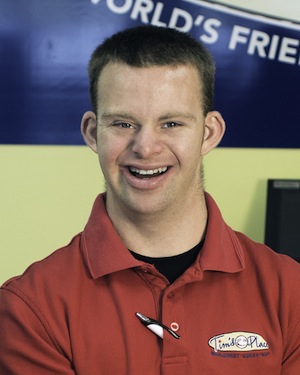 Owning Tim’s Place is a dream come true for Tim Harris, a young man with Down Syndrome. As manager of the restaurant, Harris puts into practice what he learned while in college studying food service and restaurant hosting. He also continues a rewarding career that he started while working at many different restaurants during high school, college and after college. The restaurant also allows him to also give back to the community as an employer and a sponsor of Special Olympics and the National Down Syndrome Congress.
Owning Tim’s Place is a dream come true for Tim Harris, a young man with Down Syndrome. As manager of the restaurant, Harris puts into practice what he learned while in college studying food service and restaurant hosting. He also continues a rewarding career that he started while working at many different restaurants during high school, college and after college. The restaurant also allows him to also give back to the community as an employer and a sponsor of Special Olympics and the National Down Syndrome Congress.
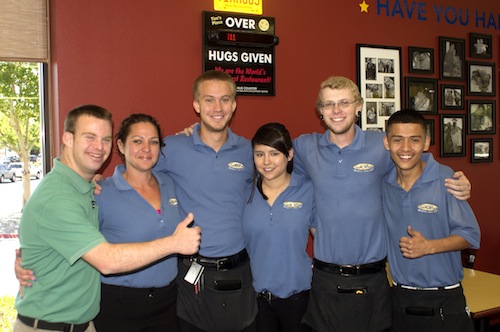
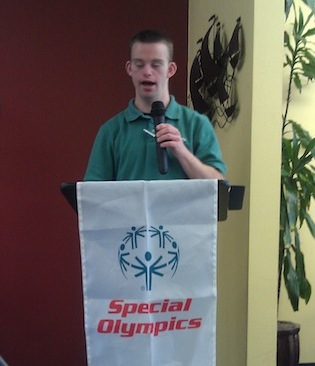
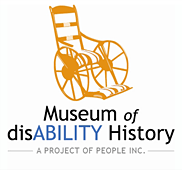 What’s one of the best ways to have fun while learning history? Museums around the country champion history through various lenses, from the stalwart Smithsonian museums in Washington, D.C. to smaller venues that showcase more targeted segments of human history. The disability community now has a museum—complete with traveling exhibits and featuring an ever-growing robust online presence—to call its own.
What’s one of the best ways to have fun while learning history? Museums around the country champion history through various lenses, from the stalwart Smithsonian museums in Washington, D.C. to smaller venues that showcase more targeted segments of human history. The disability community now has a museum—complete with traveling exhibits and featuring an ever-growing robust online presence—to call its own.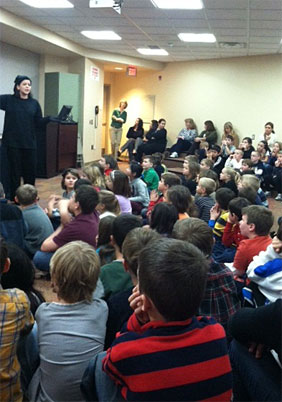
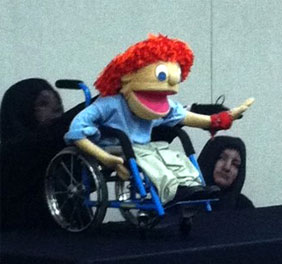
 Bargains! They’re the clarion call of every shopper. The Internet has become an ideal platform for finding discounts on a multitude of goods and services. Although there were already many services offering deals and online coupons in the Washington DC metro area, Jamie Ratner, a Bethesda, Maryland mom and author of a popular blog on bargains for families, saw an unserved niche: She noticed that most deals offered on websites such as Groupon and Living Social were primarily aimed at young singles.
Bargains! They’re the clarion call of every shopper. The Internet has become an ideal platform for finding discounts on a multitude of goods and services. Although there were already many services offering deals and online coupons in the Washington DC metro area, Jamie Ratner, a Bethesda, Maryland mom and author of a popular blog on bargains for families, saw an unserved niche: She noticed that most deals offered on websites such as Groupon and Living Social were primarily aimed at young singles.